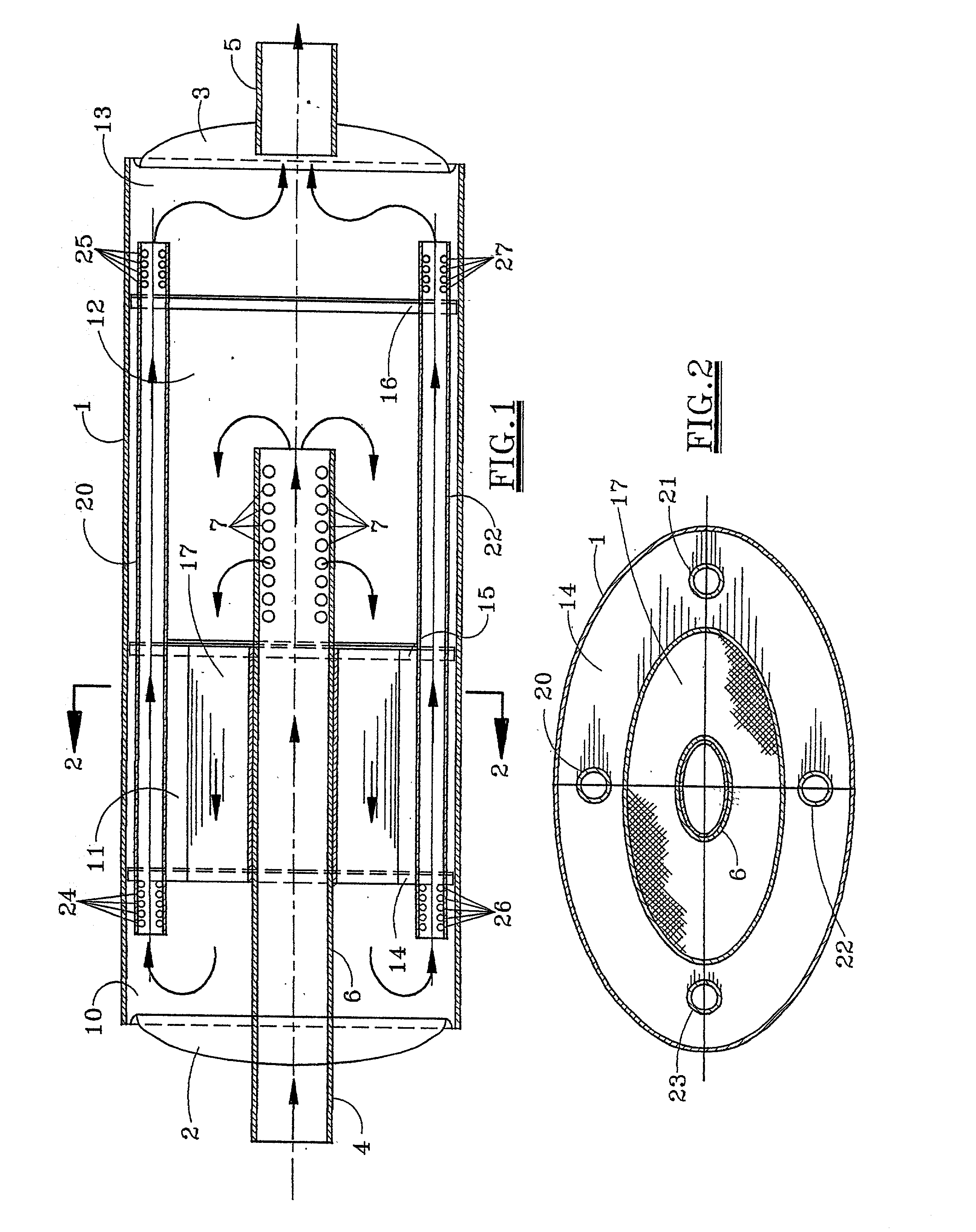Emission control apparatus
- Summary
- Abstract
- Description
- Claims
- Application Information
AI Technical Summary
Benefits of technology
Problems solved by technology
Method used
Image
Examples
Example
[0026] Referring first to FIGS. 1 and 2, there is shown an apparatus for controlling emissions from an internal combustion engine. The apparatus is a combination noise and pollution control apparatus, particularly adapted for use with an automobile. It includes a cylindrical housing 1 closed at opposite ends by dished heads 2 and 3. The housing 1 can be cylindrical or, as in the preferred embodiment illustrated in FIGS. 1 and 2, of elliptical cross-section. If cylindrical, the heads 2 and 3 are semi-spherical. If elliptical, they are semi-elliptical in shape. The head 2 is provided with a single inlet 4 by which the apparatus may be connected to the exhaust (not shown) of an internal combustion engine (not shown). The opposite head 3 is provided with an outlet 5. The outlet 5 may be connected to a discharge pipe (not shown) or in the case of an automobile to the tailpipe (not shown). In the exemplary embodiment, the inlet 4 is formed by the end of a tubular member 6 which is coaxial...
PUM
| Property | Measurement | Unit |
|---|---|---|
| Flow rate | aaaaa | aaaaa |
| Diameter | aaaaa | aaaaa |
Abstract
Description
Claims
Application Information
 Login to View More
Login to View More - R&D
- Intellectual Property
- Life Sciences
- Materials
- Tech Scout
- Unparalleled Data Quality
- Higher Quality Content
- 60% Fewer Hallucinations
Browse by: Latest US Patents, China's latest patents, Technical Efficacy Thesaurus, Application Domain, Technology Topic, Popular Technical Reports.
© 2025 PatSnap. All rights reserved.Legal|Privacy policy|Modern Slavery Act Transparency Statement|Sitemap|About US| Contact US: help@patsnap.com

